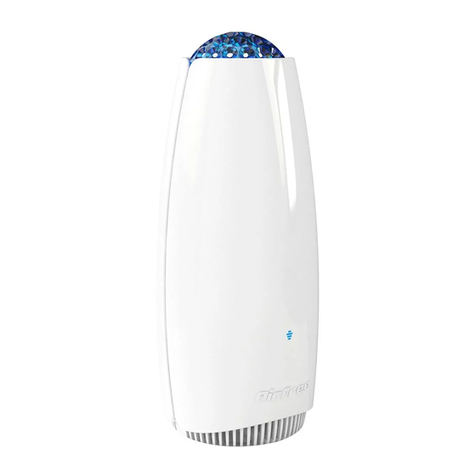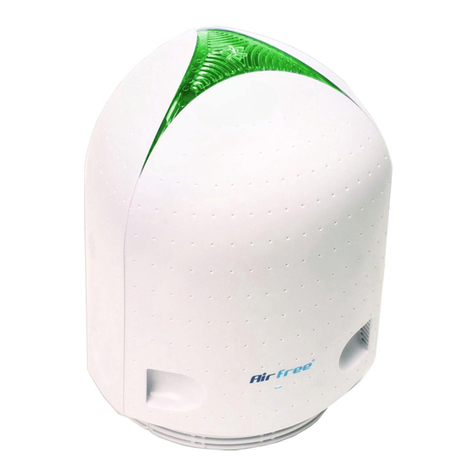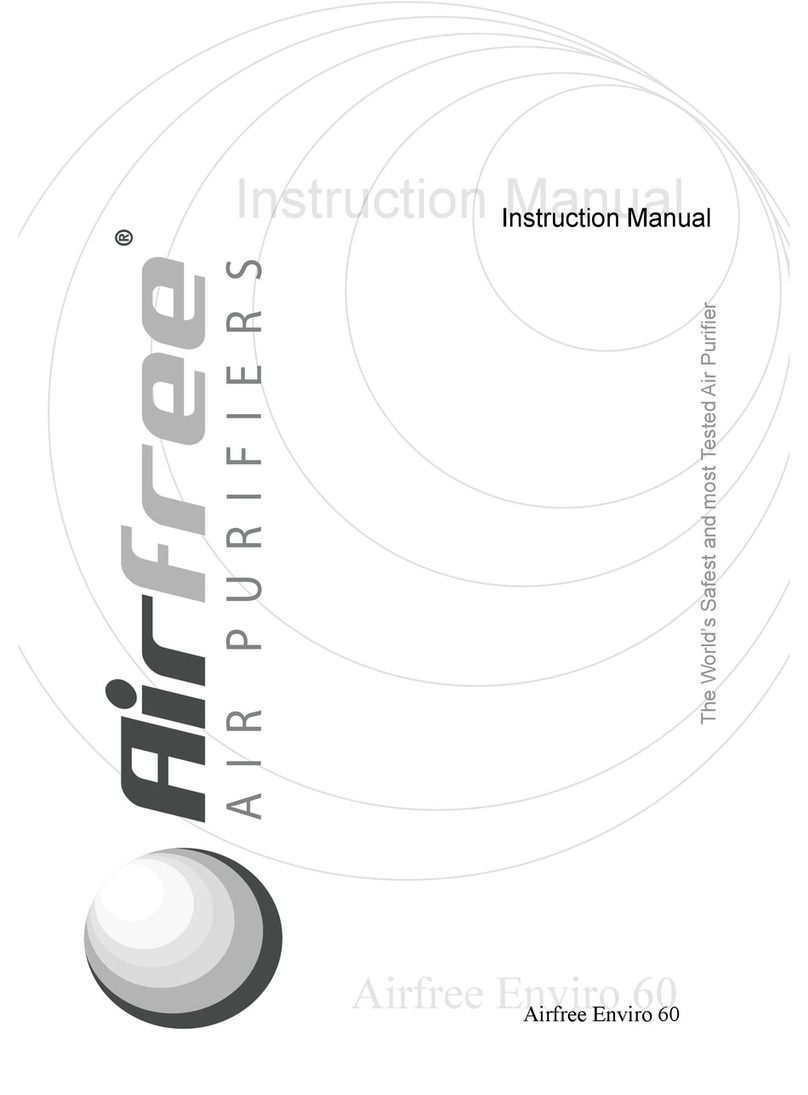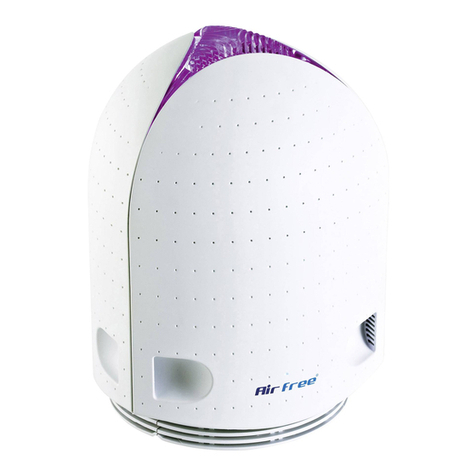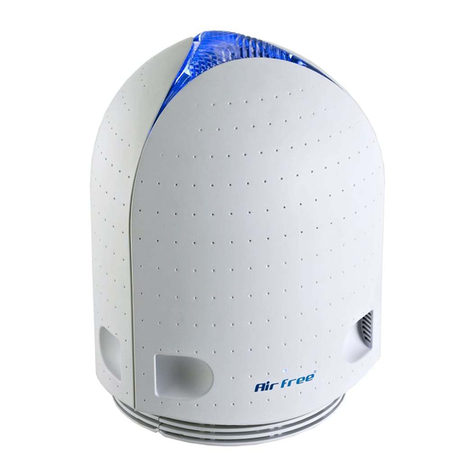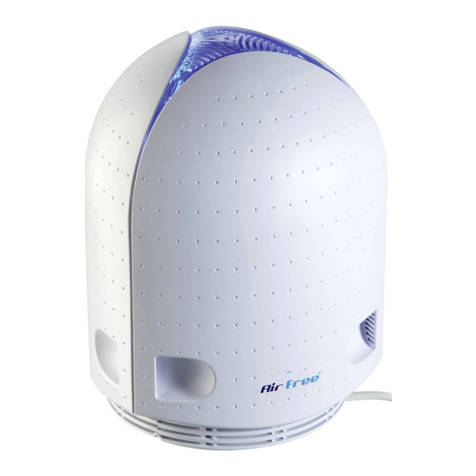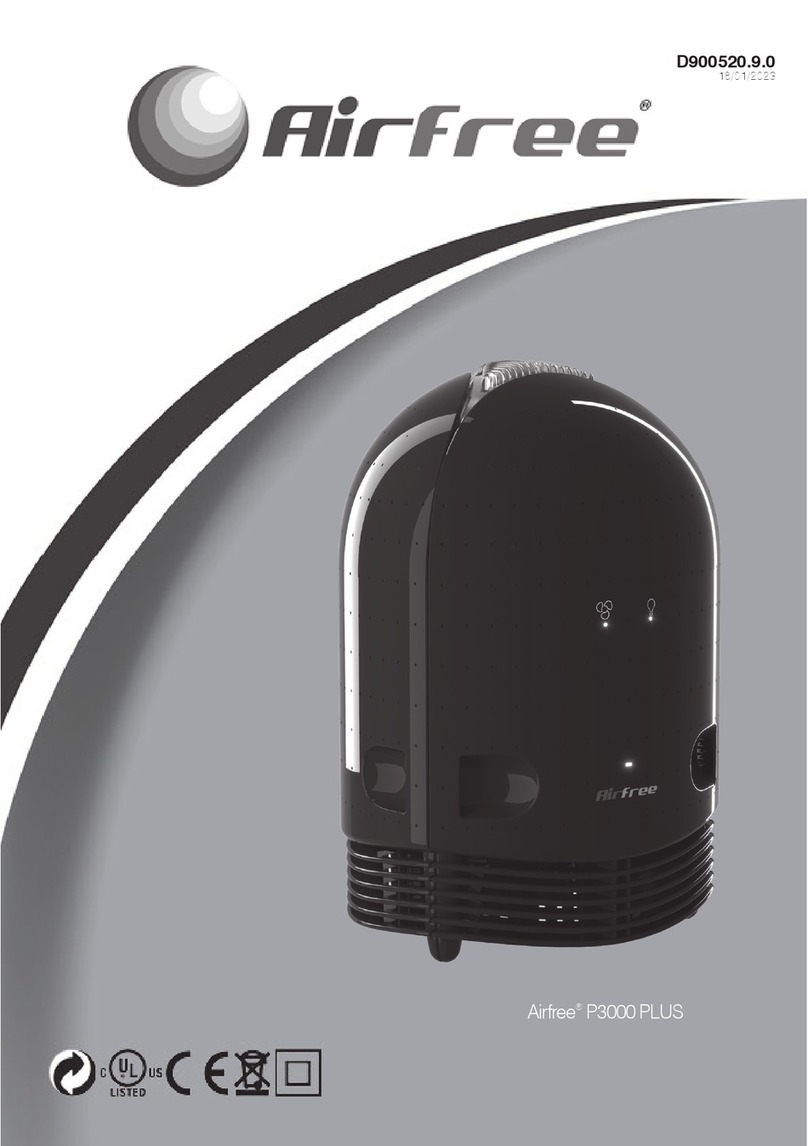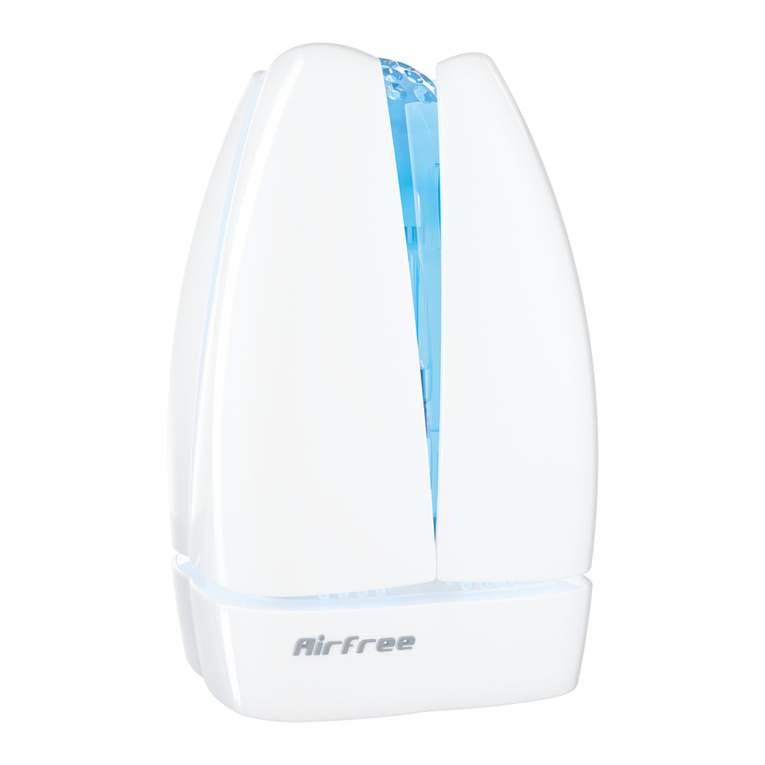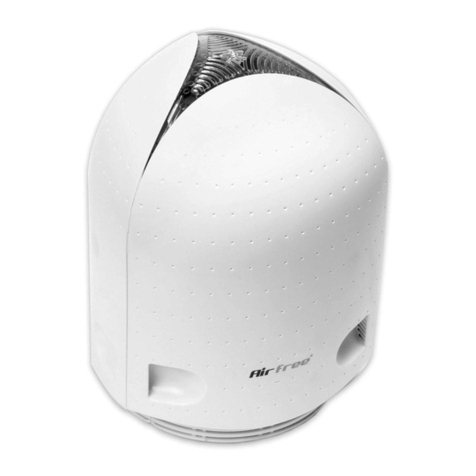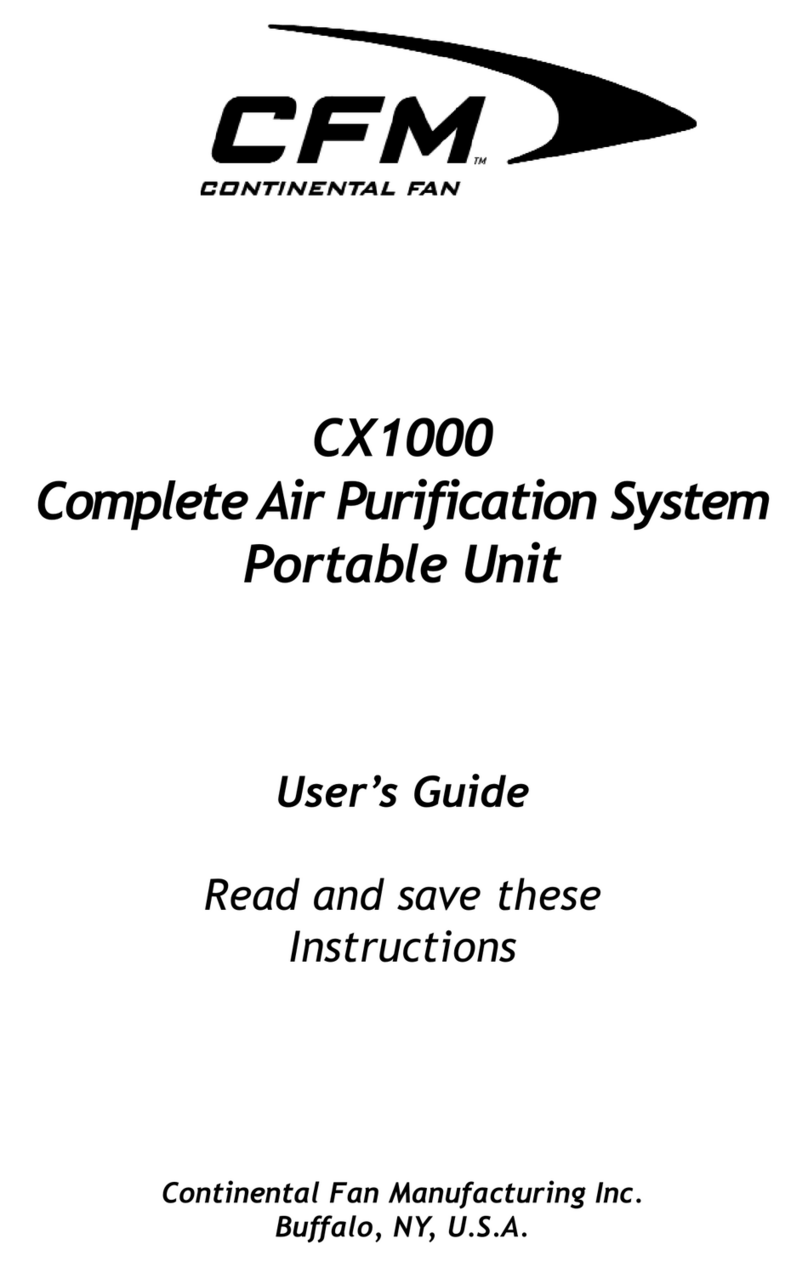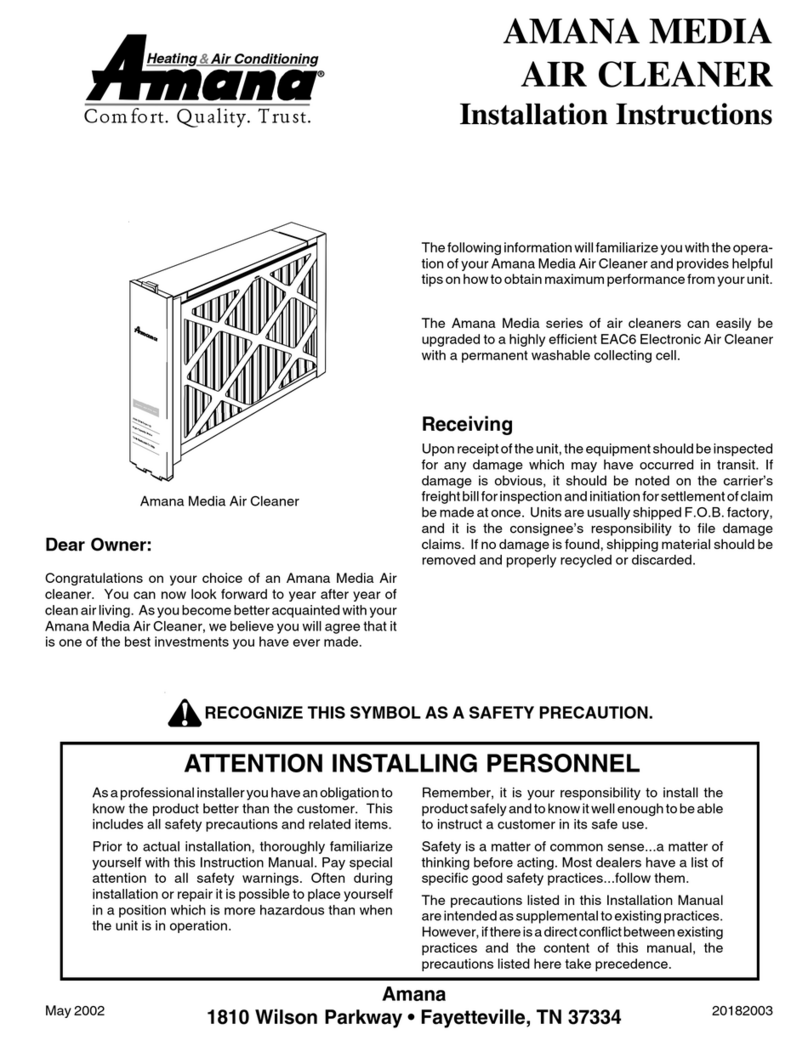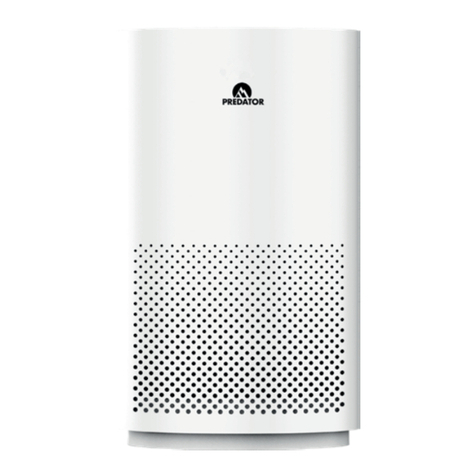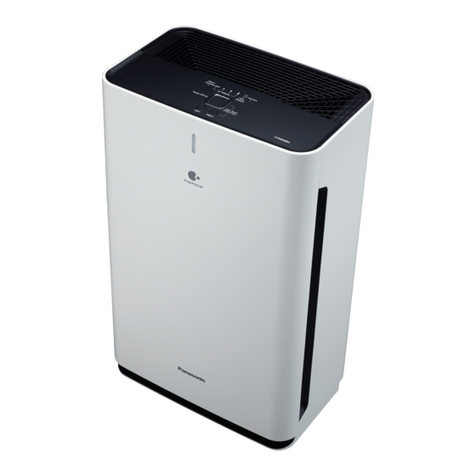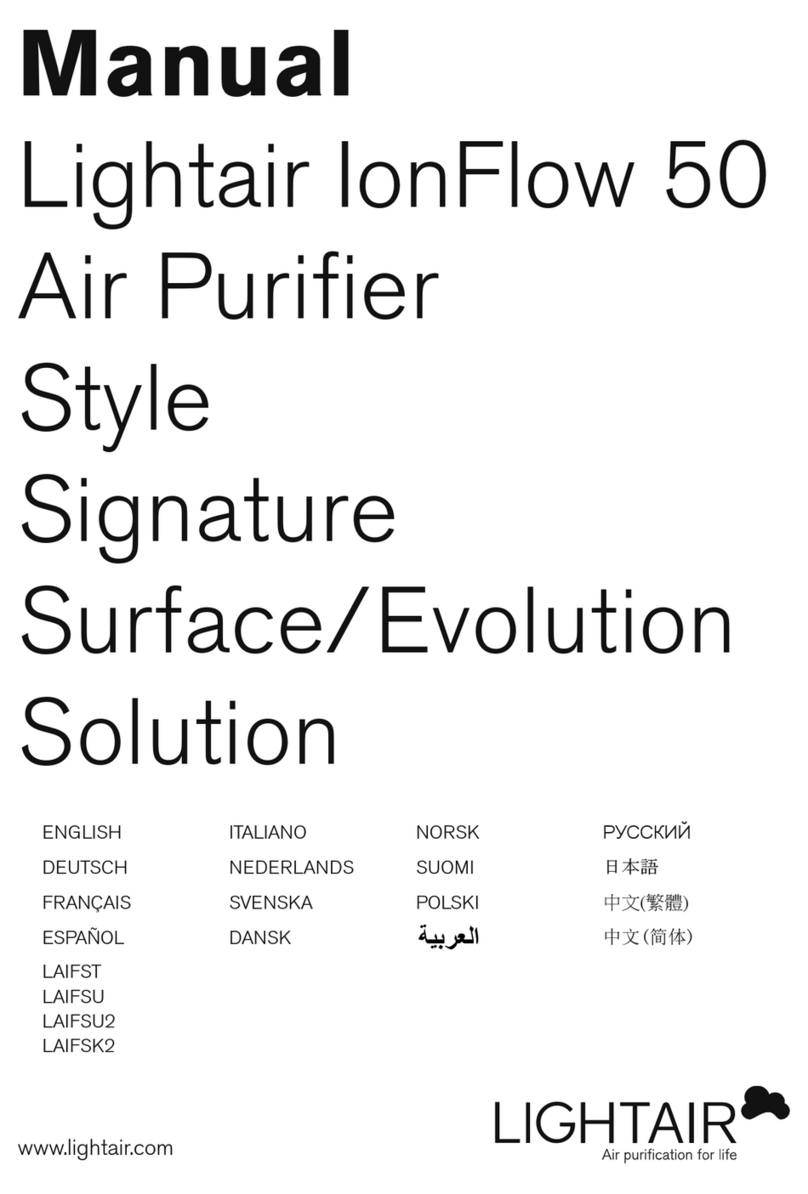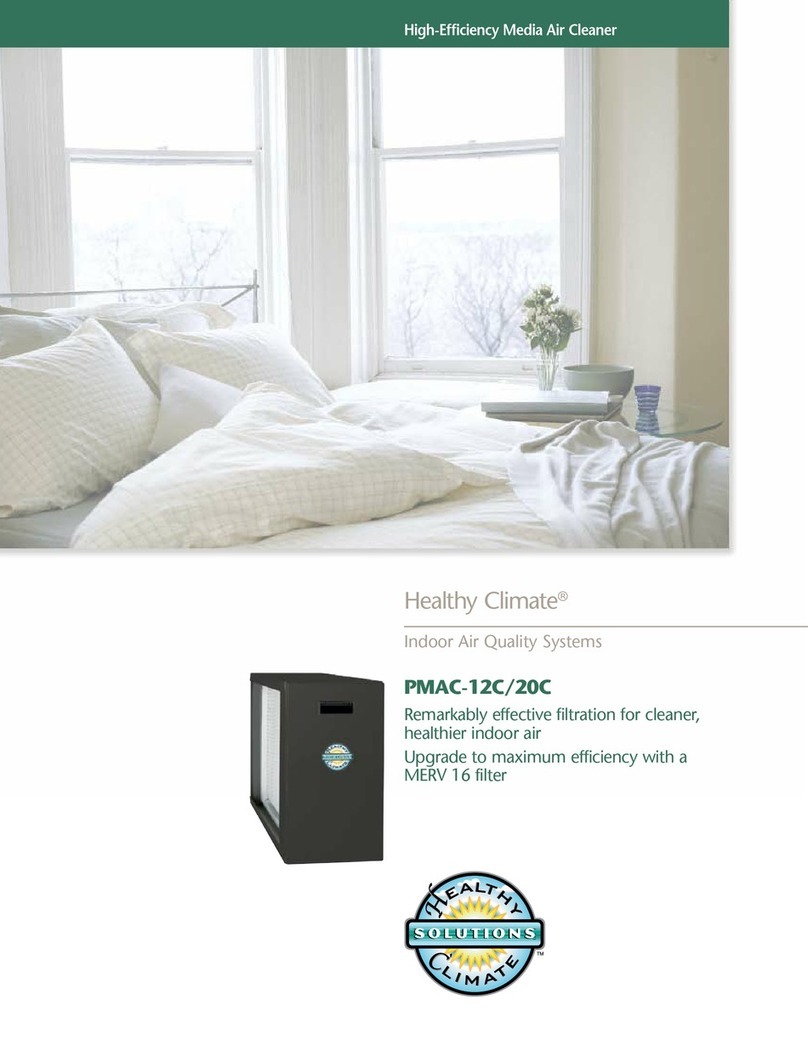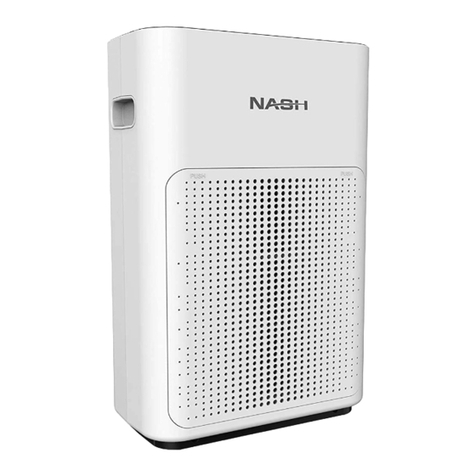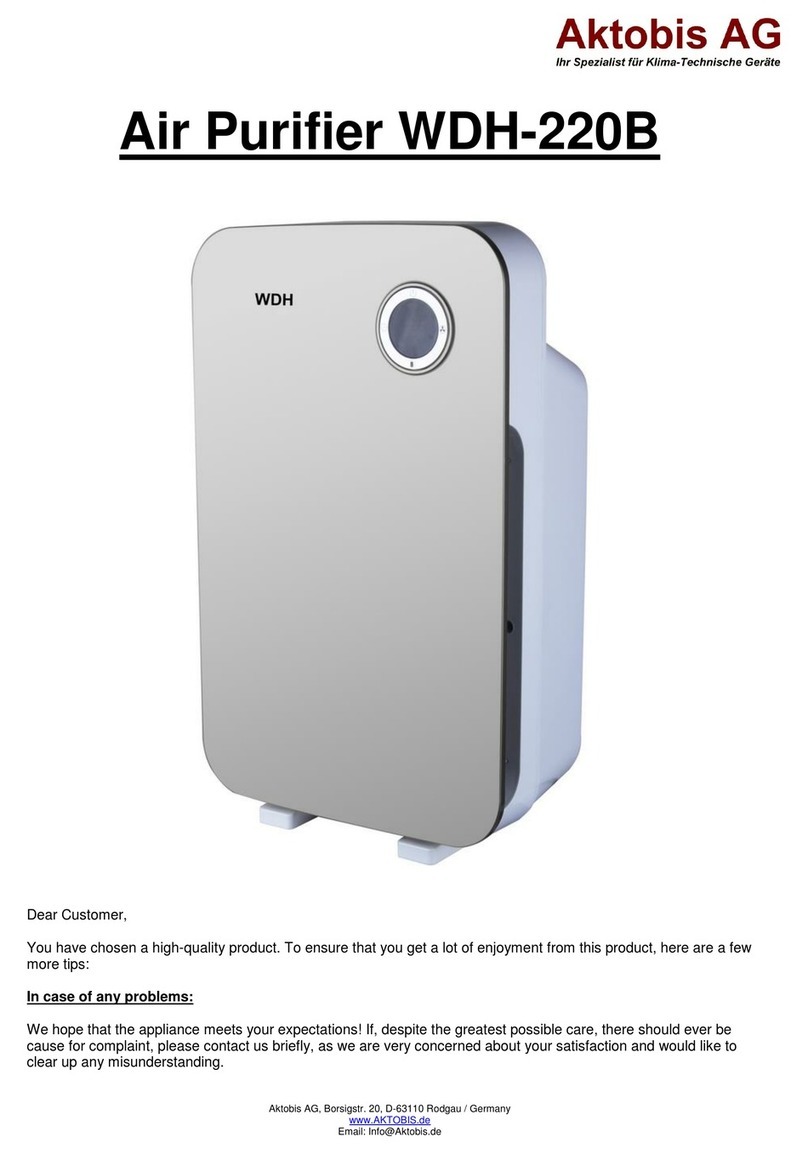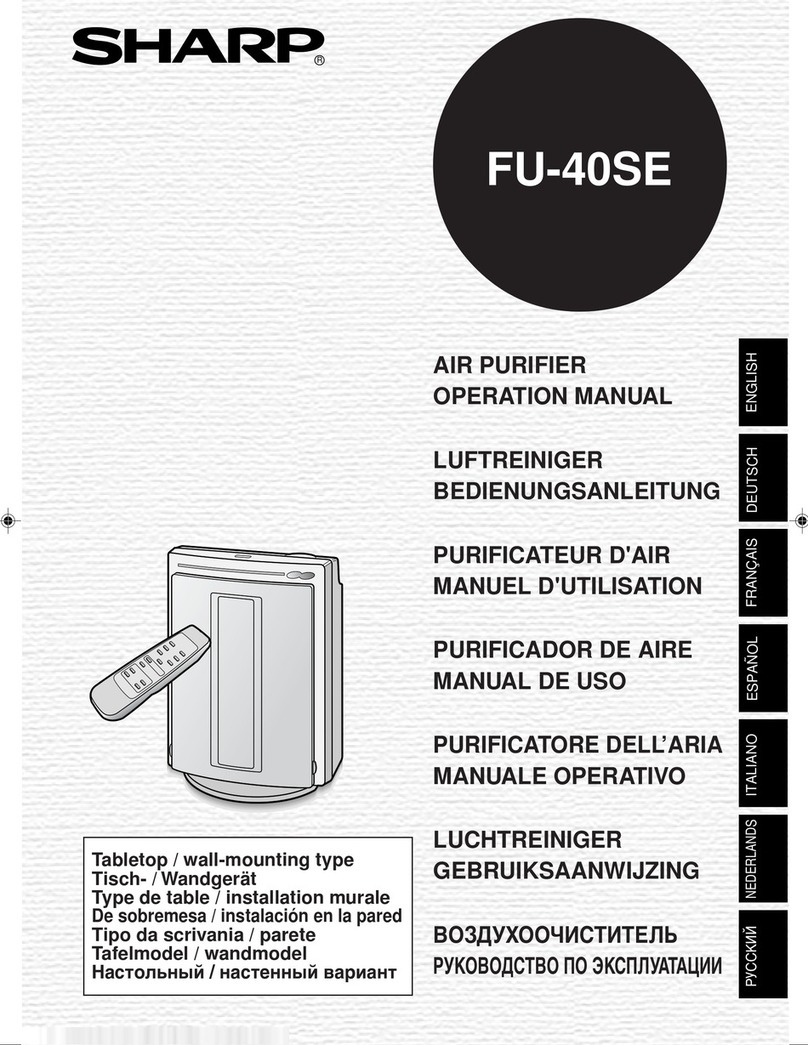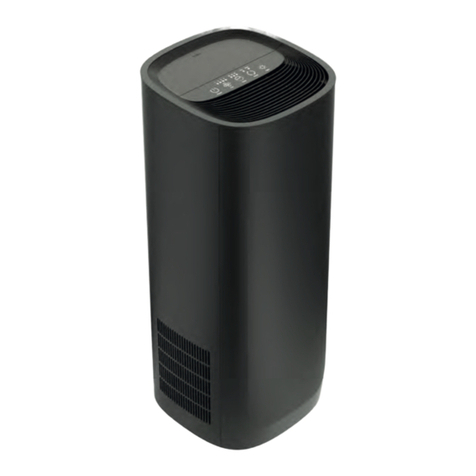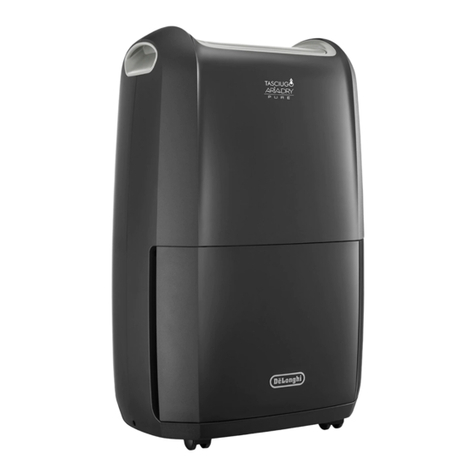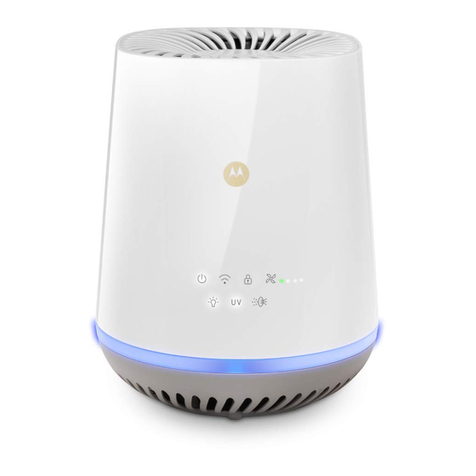
7
English
measured after air sample incubation in a microbiology lab. Airfree®destroys (not trap or
attract to other surface) any microorganism regardless of how small they might be. 99.99% of
all microorganisms are fully destroyed when passing through the Airfree®patented ceramic
core.
10. What happens if Airfree®is disconnected or there was a black out?
Airfree®will take approximately the same time to recover the previous reduced contamination
level.
11. Does Airfree®eliminate bacteria and viruses?
Yes. Unlike the air filters in the market Airfree®is more efficient with the smallest
microorganisms as they are easily carried by Airfree®’s airflow into the sterilising TSS™ceramic
core. Please check the independent bacteria and virus tests at our website.
12. How does Airfree®destroy dust mites?
Mould reduction in the environment causes reduction in the mould dependant dust mite
population. Airfree®also destroys the harmful toxins and fungus freed into the air by dust mite
feces and skeletons that trigger respiratory allergies and asthma.
13. How does Airfree®eliminate fungi and moulds?
As mentioned before, Airfree®eliminates airborne microorganisms there included moulds, fungi
and spores. By eliminating spores new mould colonies are unlikely to develop, representing
less future airborne mould spores. Please check the independent mould tests at our website.
14. How does Airfree®destroy viruses?
Those microscopic microorganisms are easily eliminated inside Airfree®’s ceramic core
capillaries. Contrary to other technologies the smallest the microorganisms the easiest they
are destroyed inside the TSS™ceramic core capillaries. Please check the independent virus
test at our website.
15. Does Airfree®make any humidity level change in the room?
No.
16. Does Airfree®release any gas or chemical product?
No. Airfree®’s sterilisation process is natural. Please check our website for conclusive tests
regarding particles and ozone.
17. Does Airfree® heat up a room?
Airfree®does not make any noticeable increase in the room temperature. Just for
comparison two Airfree®devices plugged in the same room will contribute as much heat as
one 70 kg adult.
18. Does Airfree® need lter replacement?
No.
19. Where do the microorganisms go after they are destroyed?
All living microorganisms are basically composed by carbon, oxygen an nitrogen. Since
Airfree®reaches nearly 200 °C, all the components decompose into carbone dioxide (the same
product released by our respiration) and water. Some carbon (or microscopic ashes) may
remain inside the device or over the top lid during the process. It should be noted that all
happens in a microscopic level, so all those residues are a very small fraction of the
microorganisms original microscopic size, in other words meaningless.



